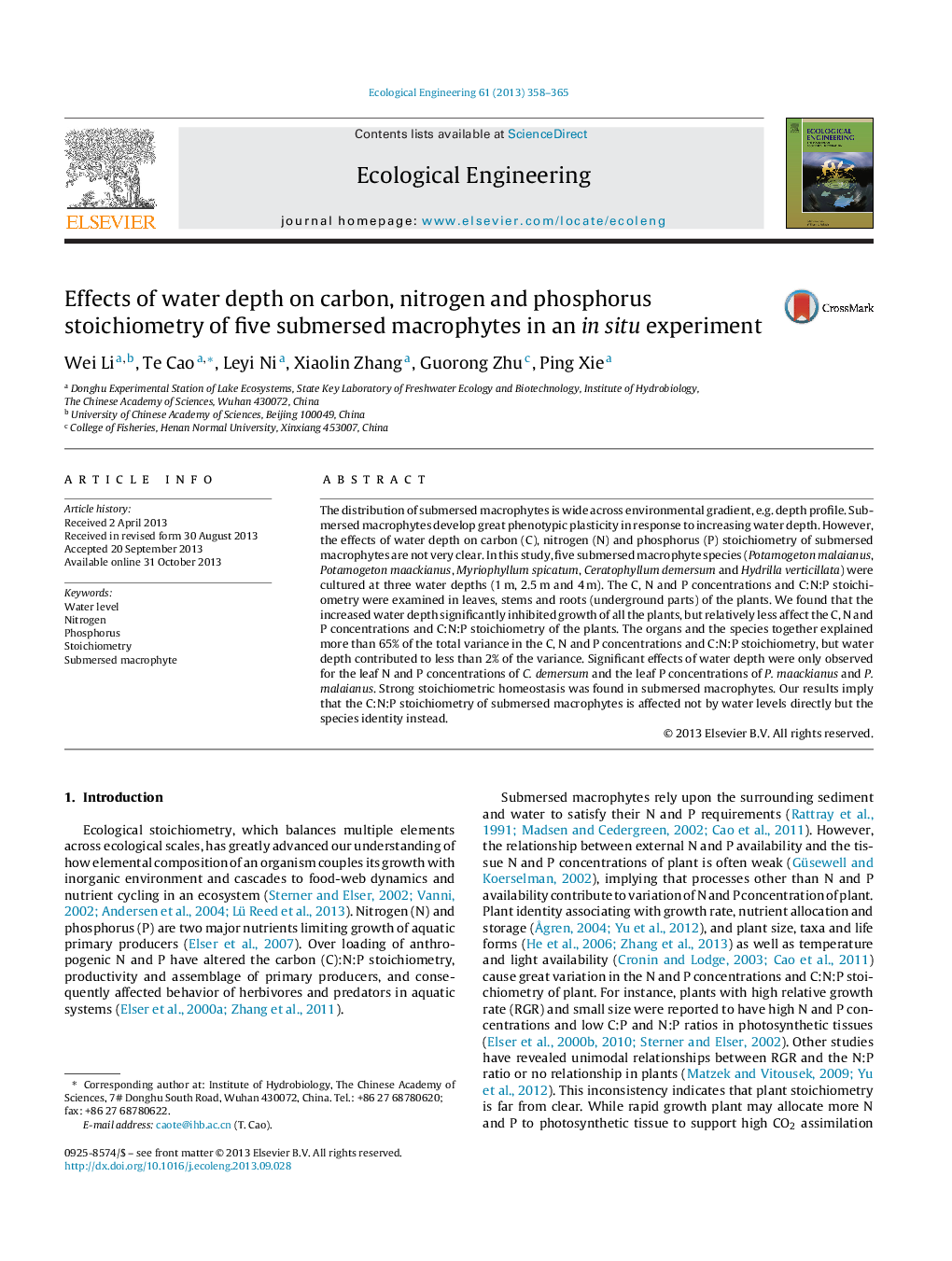| Article ID | Journal | Published Year | Pages | File Type |
|---|---|---|---|---|
| 4389498 | Ecological Engineering | 2013 | 8 Pages |
Abstract
The distribution of submersed macrophytes is wide across environmental gradient, e.g. depth profile. Submersed macrophytes develop great phenotypic plasticity in response to increasing water depth. However, the effects of water depth on carbon (C), nitrogen (N) and phosphorus (P) stoichiometry of submersed macrophytes are not very clear. In this study, five submersed macrophyte species (Potamogeton malaianus, Potamogeton maackianus, Myriophyllum spicatum, Ceratophyllum demersum and Hydrilla verticillata) were cultured at three water depths (1Â m, 2.5Â m and 4Â m). The C, N and P concentrations and C:N:P stoichiometry were examined in leaves, stems and roots (underground parts) of the plants. We found that the increased water depth significantly inhibited growth of all the plants, but relatively less affect the C, N and P concentrations and C:N:P stoichiometry of the plants. The organs and the species together explained more than 65% of the total variance in the C, N and P concentrations and C:N:P stoichiometry, but water depth contributed to less than 2% of the variance. Significant effects of water depth were only observed for the leaf N and P concentrations of C. demersum and the leaf P concentrations of P. maackianus and P. malaianus. Strong stoichiometric homeostasis was found in submersed macrophytes. Our results imply that the C:N:P stoichiometry of submersed macrophytes is affected not by water levels directly but the species identity instead.
Related Topics
Life Sciences
Agricultural and Biological Sciences
Ecology, Evolution, Behavior and Systematics
Authors
Wei Li, Te Cao, Leyi Ni, Xiaolin Zhang, Guorong Zhu, Ping Xie,
